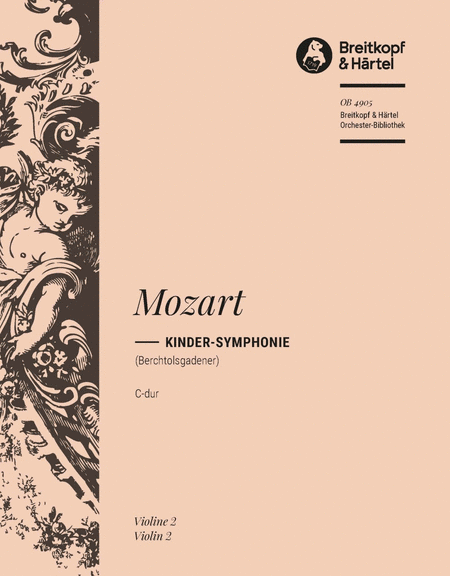Children's Symphony in C major
Berchtolsgaden
-
Ships in 3 to 4 weeks
Details
Description
SKU: BR.OB-4905-16
Berchtolsgaden. Composed by Leopold Mozart. Edited by Gustave Sandre. Arranged by Gustave Sandre. Stapled. Orchester-Bibliothek (Orchestral Library). The piano versions of the "Children's Symphony" have been part of Breitkopf's orchestral materials for over a hundred years now. They are not merely piano parts, however, but full-blooded reductions for piano twohands or four-hands. Symphony; Early classical. Part. 4 pages. Duration 11'. Breitkopf and Haertel #OB 4905-16. Published by Breitkopf and Haertel (BR.OB-4905-16).ISBN 9790004324455. 9 x 12 inches.
The work, originally titled Berchtolsgader-Musik, goes back to the Cassatio ex G by Leopold Mozart, whose movements 3, 4 and 7 are identical to the Kinder-Symphonie [Children's Symphony]. For a long time, the authorship of the work was uncertain. It was attributed to Joseph Haydn and his brother Michael, at times also to Edmund Angerer and Leopold Mozart's pupil Johann Rainprechter. The work probably first received the designation "Kinder-Symphonie" in 1813 through an edition by the music publisher Hofmeister.In the Children's Symphony, a cuckoo, a quail and other unusual instruments are used in addition to the usual orchestral scoring. These belong to the Berchtesgaden instruments: flutes, whistles and rattles carved from wood, manufactured in the Berchtesgaden region and widely used as children's toys throughout the country. Today, these instruments can also be replaced by flutes, whistles as well as ratchets, rattles or bell trees.
The piano versions of the "Children's Symphony" have been part of Breitkopf's orchestral materials for over a hundred years now. They are not merely piano parts, however, but full-blooded reductions for piano twohands or four-hands.

 Share
Share